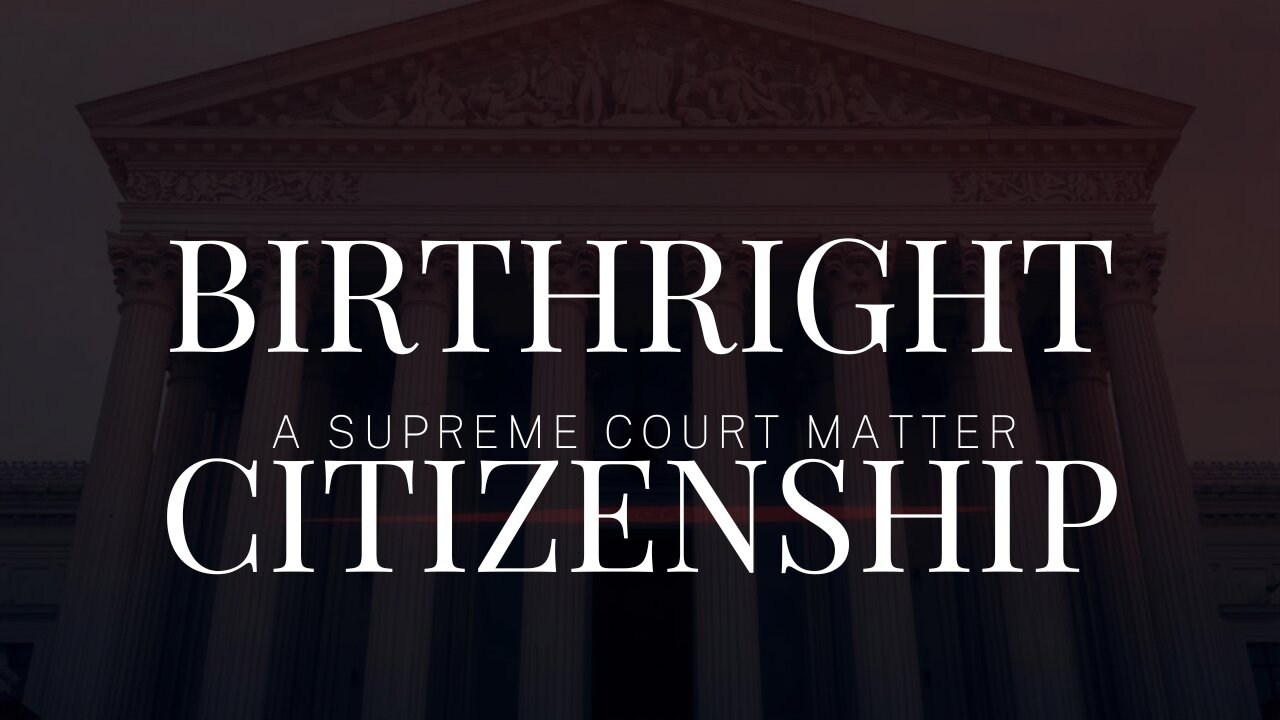A liberal retired judge from the D.C. Circuit Court of Appeals is about to publish his memoir. That story broke Friday in Newsweek, which was quoting The Washington Post. In an apparent interview with the Post, this judge made several serious accusations against the United States Supreme Court. But everything he said, is actually true of the Court of Appeals for the District of Columbia while he sat on it – and is still true today.
Who is Judge David Tatel?
Judge David S. Tatel came to the Court of Appeals for the District of Columbia Circuit in 1994 on appointment by President Bill Clinton. Clinton, of course, elevated Judge Ruth Bader Ginsburg from that Court to the Supreme Court. He then appointed Judge Tatel to take her place. For twenty-eight years he served as an active judge. In May of 2022 he became a senior judge, which gave him a lighter workload and excused him from en banc hearings.
Then in June 2023 he decided to retire permanently and completely from the Court, and rejoin his old law firm. That retirement became effective in January of 2024. More to the point, the United States Supreme Court had finished two momentous terms that evidently caused him great disquiet. The 2021 Term was arguably the more famous, involving as it did a leak of a pending decision. It was also famous for another reason: the decision in Dobbs v. Jackson Women’s Health Organization. Not only did that decision make abortion no longer “the law of the land,” but also – and perhaps more disquieting to Judge Tatel – it served notice that precedent – or in Latin, stare decisis – would no longer be absolute. Time, in other words, would no longer sanction all Justicial errors. Judge Tatel might have known that time doesn’t sanction all errors with the two rulings in Brown v. Topeka Board of Education. That he didn’t know, shows his worst failing: he’s a hypocrite.
Our precedents are better than yours!
Precedent is venerable – so long as he likes the precedent. On the one hand, he would never defend Scott v. Sandford or Plessy v. Ferguson. But he is perfectly copacetic defending:
US v. Miller (1939), sustaining the National Firearms Act of 1934.
Everson v. Board of Education of Ewing (1947), forbidding government aid to any religious institution because it was religious. (See here for further discussion of that precedent.)
McCollum v. Board of Education of School District 71 (1948), the real School Prayer Case.
Engel v. Vitale (1962), the “School Prayer Case” of legend. The infamous Madalyn Murray O’Hair liked to take credit for that, but she likely didn’t deserve it. The credit – or the blame – goes to James G. Blaine (1875).
Abingdon School District v. Schempp (1963), another explicit prohibition against Bible reading in class.
Lemon v. Kurtzman (1971), containing the anti-religious “Test” bearing the name of the petitioner.
Roe v. Wade (1973).
Wallace v. Jaffree (1985), forbidding silent prayer time.
Lee v. Weisman (1992), forbidding baccalaureates or clergy-led prayers during commencement at government schools. (In the USA, a baccalaureate is a religious service for honoring graduates.)
Santa Fe Independent School District v. Doe (1995), essentially forbidding prayer on school playing fields.
National Federation of Independent Businesses v. Sebelius (2012), the Obamacare Case.
Obergefell v. Hodges (2015), the “gay marriage” case.
How the Supreme Court weakened those precedents
In its 2021 Term, the Supreme Court overruled many of these precedents and put others in direct threat. To be specific:
Roe v. Wade fell to Dobbs v. Jackson Women’s Health Organization. This case occasioned the Great Leak. Every overruling of precedent follows the reasoning in Dobbs.
Everson v. Board of Education of Ewing fell to Carson v. Makin.
US v. Miller doesn’t quite fall to New York State Rifle and Pistol Association v. Bruen, but it did come under threat. Federal firearms regulation was not at issue. But State “may-issue” licensing schemes that openly invited arbitrariness and caprice, were.
Lemon v. Kurtzman fell to Kennedy v. Bremerton School District. In CNAV’s view, this decision invites challenges to the McCollum, Engel, Abingdon, Wallace, Lee, and Santa Fe precedents. Had Coach Kennedy really “pushed” it, he could have knocked out Santa Fe as well as Lemon.
In addition to all the above, Clarence Thomas specifically, in his concurrence in Dobbs, invited re-examination of no fewer than three “substantive due process” precedents. Obergefell v. Hodges is one of them. If any precedent will fall from revising out “substantive due process,” it’s that one. (Of the other SDP precedents, Roe has already fallen. The other three precedents will prove much harder to challenge, because they might merely need better reasoning.)
The 2022 Term
In its 2022 Term, the Supreme Court struck down or weakened yet more precedents. The two Students for Fair Admissions cases overrode Regents of the University of California v. Bakke and Grutter v. Bollinger. 303 Creative v. Elenis overrode a plethora of precedents asserting that Woke-ism Must Be Obeyed. Biden v. Nebraska didn’t so much override precedent as set one – that Presidents must also obey the Constitution. (Joe Biden, you’re no Andrew Jackson!) And one case – rolling back the absolutism of the government in deciding that a mud puddle was a wetland – was unanimous in its finding for the petitioners.
All these decisions represent a rollback of the liberal dominance of federal – especially appellate – jurisprudence after nearly fifty years. The near-absolute liberal dominance dates from Roe v. Wade. Understandably, liberal Court watchers regard Dobbs, which overrode Roe, as the floodgate. This is not correct. The death of Ruth Bader Ginsburg, and the appointment of Amy Coney Barrett to take her place, was the floodgate. Or perhaps the election of Donald Trump was the floodgate.
Either way, Judge David Tatel objected strenuously to the Court’s jurisprudence. Specifically he told the Post that he grew tired of the Supreme Court reversing his rulings on certiorari. He feels the Supreme Court “hold[s] in … low regard the principles to which [he has] dedicated [his] life.”
The tragedy is that he fails to recognize that he has devoted his life to principles of social justice and social equity, not to equal justice under law.
Judge Tatel makes his complaint
The complaint by Judge David Tatel takes the form of a memoir: Vision: A Memoir of Blindness and Justice. And as far as one can determine from the Newsweek piece, Judge Tatel’s major complaint is that the Court kept reversing him.
It was one thing to follow rulings I believed were wrong when they resulted from a judicial process I respected. It was quite another to be bound by the decisions of an institution I barely recognized.
Just what judicial process does he respect? The judge doesn’t say. The Newsweek piece strongly implies that he objects to Dobbs. Perhaps he also objects to Bruen, Carson, Kennedy, 303 Creative, the SFFA cases, and Biden v. Nebraska. (Whether he would object to Sackett et uxor v. EPA is less clear; the specific judgment that the EPA went overboard in their findings against the Sacketts was unanimous.) But the only grounds one can infer for his objections is that the decisions upheld “conservative” principles.
This statement gives a better clue:
[While neutral judging] fosters public trust in the rule of law, [judging that could be] based on a preordained agenda, not on text or precedent or deference, depletes the reservoir of public confidence.
Whom is he talking about? He could be talking about any of the Originalists, but especially Justices Samuel A. Alito and Clarence Thomas. Well, what’s the problem? Does he really suppose that once the Court, under prior composition, makes a decision, that decision must stand, no matter how much in error it was, and how much violence it did to the Constitution? That was Sam Alito’s problem with the precedent of Roe v. Wade.
Who has the preordained agenda?
Justice Alito “nailed” the problem with Roe: its majority had a preordained agenda. Why else would they speak so carelessly of “penumbras” of the Bill of Rights? And what was that agenda? Well, Justice William O. Douglas wanted to be able to chase women around his desk in chambers without fear of having to pay child support later. Perhaps that was also the desire of the other six in the Roe majority. Would today’s Supreme Court retain the esteem of the people by upholding a precedent from that kind of ignoble motive? CNAV thinks not.
And today, every member of the Liberal Bloc approaches oral argument with a preordained agenda. Justices Ketanji Brown Jackson and Sonia Sotomayor have made that abundantly – indeed nauseatingly – clear; Justice Elena Kagan has perhaps been somewhat less clear. But in fact every one of the three has broken Court etiquette in their dissents, and more than once. Justice Sotomayor did that in 303 Creative v. Elenis. Justice Jackson did it in SFFA v. UNC. And Justice Kagan did it in Biden v. Nebraska, so much so that Chief Justice Roberts actually put into the Opinion of the Court a clear message to her: be careful of your tone in dissent.
Only someone having a preordained agenda would break etiquette as all three Liberals have done at least once.
Text? Precedent? Deference?
We turn now to Judge Tatel’s complaint that this Court ignores “text”, “precedent,” and “deference.” The only text the Court need respect is the Constitution of the United States, and texts of laws that do not conflict with it. Precedent cannot stand if it is erroneous; it must yield to the Constitution if it conflicts with it. And “deference”? To whom? To what? Judge Tatel doesn’t say. (Is he talking about Chevron deference, in anticipation of a ruling abolishing that doctrine?)
In fact, the Court’s liberal jurisprudence always based itself on a preordained agenda, and never respected the text of the Constitution. Sometimes (as in Roe) it stretched the Constitution to say what the text does not say. At other times it contradicted the Constitution, especially its Second Amendment and the Free Exercise Clause of the First.
Nor has the Court’s faulty jurisprudence limited itself to the latter half of the twentieth century. Witness Scott v. Sandford and Plessy v. Ferguson. Or Jacobson v. Massachusetts, which barely avoided a direct challenge only last week.
The judge doth protest too much, methinks
Finally Judge Tatel speaks of a jurisprudence that “depletes the reservoir of public confidence.” Who is the public? The public is divided today – as is the American Bar. And what divided the Bar, and the Bench? Critical Legal Studies – the notion that all law is politics. This, of course, blurs the distinction between positive law, that humans make, and natural law, that follows from nature. (Or more accurately, from nature’s God.) Judge Tatel seems to have thoroughly imbibed Critical Legal Studies. His protests against the Court reversing him so often, are petty.
But what really “depletes the reservoir of public confidence” is a jurisprudence that makes justice an issue of people, not of law. New York v. Trump is the obvious example, but Roe v. Wade is an even better example. Even Ruth Bader Ginsburg found its reasoning faulty, however much she agreed with its conclusion.
For a converse example, consider New York State Rifle and Pistol Association v. Bruen and the dissent. Justice Stephen G. Breyer listed statistic after statistic trying to prove that it’s not safe for any person, except a law-enforcement officer, an active-duty military service member, a Very Important Person, or his bodyguard, to own, carry, or so much as touch, let alone discharge, a firearm. One can imagine him saying to Justice Thomas:
Clarence, you … you’re kidding. You’re not kidding? You’re out of your mind! Don’t all these mass shooting statistics tell you that it’s not safe to leave guns in the hands of any but those who are trained, by the exacting standards of the law-enforcement and military professions, to handle firearms responsibly? How can you sleep at night, knowing that a stray bullet, fired by just such an irresponsible civilian as any member of the petitioner organization, might crash through your bedroom window and into your body? What can you be thinking!? ARE you thinking!?
Justice Thomas in effect answered:
Steve, calm down. And remember that the Second Amendment is scarcely the only Constitutional right, the free exercise of which others have decried as physically unsafe for the public.
Judge Tatel would do well to read Justice Thomas’ opinion in Bruen. And maybe he should have read it before he wrote his book.
Conclusion
Judge Tatel did the country a favor by retiring from the Court of Appeals for the District of Columbia. He actually saved a properly patriotic House of Representatives the trouble of impeaching him for infidelity to the Constitution. In fact he did the country another favor by retiring when the Supreme Court had no openings. Or did he give up after waiting in vain for Congress to pass a measure enlarging the Supreme Court? He must have known that no vacancy would obtain after Republicans “flipped” the House in 2022.
CNAV awaits his memoir with no small amount of trepidation, in the belief that his Vision will prove a nightmare. That need not be the case – but his statements on interview are not promising. This illustrates the vital importance of having a cadre of Senators willing to defer to the Constitution, not to a President who violates his oath to it, as it considers judicial nominations – at any level.
Link to:
The article:
https://cnav.news/2024/06/09/foundation/constitution/judge-liberal-retiring-master-projection/
Video:

Declarations of Truth X feed:
Declarations of Truth Locals Community:
https://declarationsoftruth.locals.com/
Conservative News and Views:
Clixnet Media























